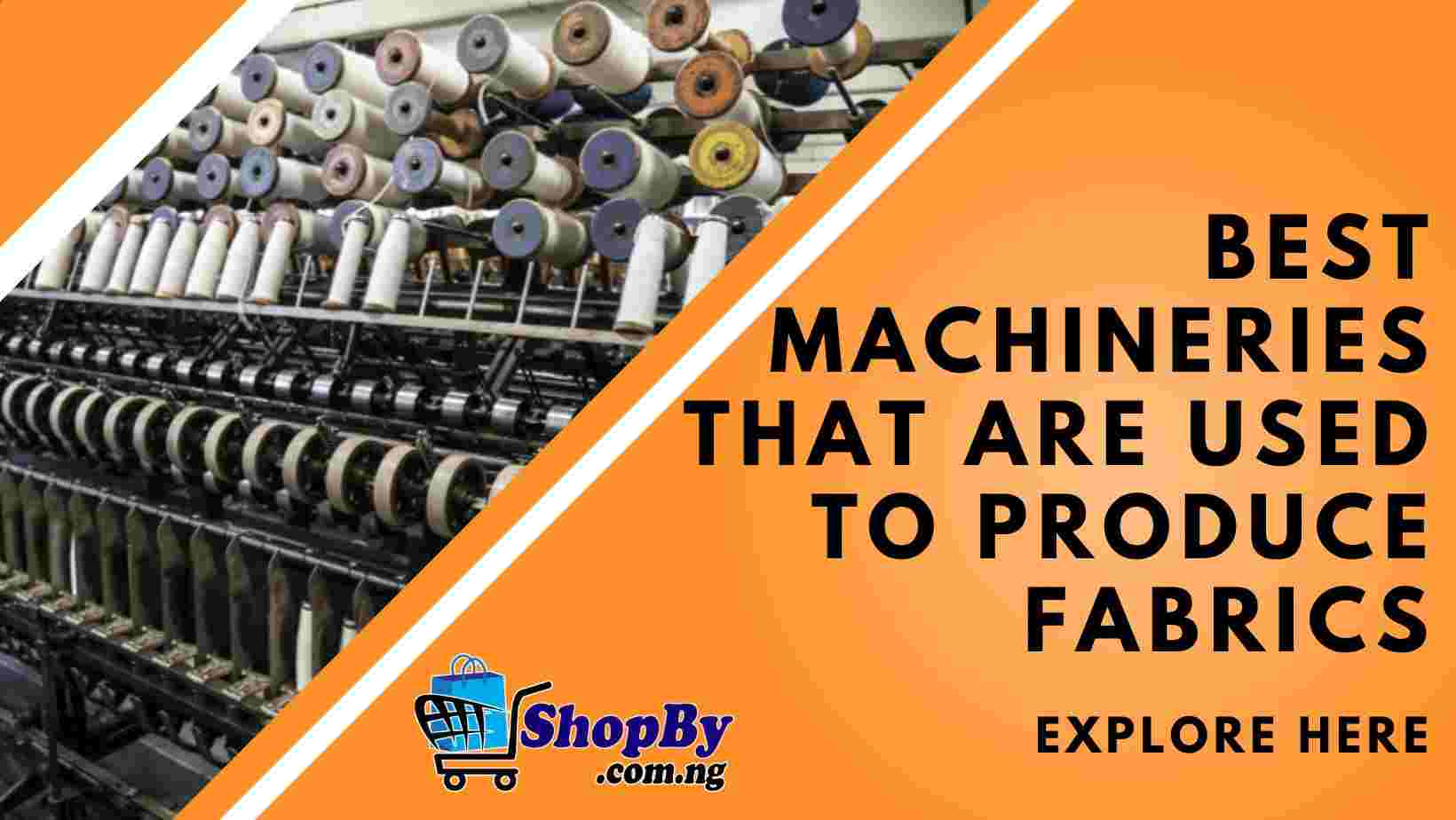- Your cart is empty
- Continue Shopping
BEST MACHINERIES THAT ARE USED TO PRODUCE FABRICS

Machinery for Fabrics shopby!
FABRICS
Fabrics is cloth or other material produced by weaving together cotton, nylon, wool, silk, or other threads. Fabrics are used for making things such as clothes, curtains, and sheets. Fabrics production is no simple task.
TYPES OF MACHINESRY FOR FABRICS SHOPBY! MACHINERIES USED
Every industry has machines separately involving fiber/fabrics production and few for textile production.
A wide variety of machines are used by the textile industry to sew fabrics and make clothes, carpets and other textile goods. Ranging from massive heavy-duty industrial machines to small consumer-sized.
Some of these machines used in the production of Fabrics are mentioned below:-
- Woolen Mill Machines
Wool as a renewable resource reacts to changes in body temperature. It’s active to keep you warm when you are cold and at the same time releases moisture and heat when you are hot. To preserve natural resources for generations to come, the woolgrowers work actively.
These woolen mill machines are used to develop wool into yarn. Unlike synthetics, wool is biodegradable. New blankets and throws can be created with the scrap and used wool which can be recycled.
- Winding Machines
A Winding Machine is a machine for wrapping string, twine, cord, thread, yarn, rope, wire, ribbon, tape, etc. onto a spool, bobbin, reel, etc. Winders are used heavily in textile manufacturing, especially in preparation for weaving where the yarn is wound onto a bobbin and then used in a shuttle.
Winding machines are classified based on the materials they are winding, some major types are
· Coil winding machine
· Film winding machine
· Rope winding machine
· Foil winding machine
· Roll slitting machines
· spool winding machine
· cop winding machine
- Bleaching/Dyeing Machines
Dyeing is one of the most important part in the textile industry. Based on the demand of the buyer and requirements, various types of fabric coloration are performed in dyeing section. The technique of dyeing is used to obtain an even shade with a fastness appropriate and performance to its final use. A method for coloring a textile material, in which a dye is applied to the substrate in a uniform manner. When colors of different shades are applied to fabric, the principle of dyeing actually works.
In contrast to dyeing, bleaching is applied to remove pigments and natural dyes that are in the fibers. It’s nothing but a chemical treatment employed for natural coloring matter from the substrate. Bleaching can be performed on yarn, knitted fabric and woven ones.
- Scutching Machines
Scutching is a step in the processing of cotton or the dressing of flax or hemp in preparation for spinning. The scutching process separates the impurities from the raw material, such as the seeds from raw cotton or the straw and woody stem from flax fibers. Scutching can be done by hand or by a machine known as a scutcher. Hand scutching of flax is done with a wooden scutching knife and a small iron scraper. The end products of scutching flax are the long finer flax fibers called line, short coarse fibers called tow, and waste woody matter called shives Cotton seeds from the cotton are separated with the help of these scutching machines. Scutching is a step in the processing of cotton in preparation for spinning. The process is usually done by hand or by a machine known as a scutcher. Machinery for Fabrics shopby!
- Carding Machines
The word is derived from the Latin Carduus meaning thistle or teasel as dried vegetable teasels were first used to comb the raw wool before technological advances led to the use of machines.
Carding is a mechanical process that disentangles, cleans and intermixes fibers to produce a continuous web or sliver suitable for subsequent processing. This is achieved by passing the fibers between differentially moving surfaces covered with “card clothing”, a firm flexible material embedded with metal pins.In preparing wool fibre for spinning, carding is the step that comes after teasing.
- Spinning Machines
A major part of the textile industry. You have to create the thread through spinning, before a thread can be woven together. Spin substances like cotton are spinned into a piece of thread or yarn with these spinning machines. To create a piece of fabric, the thread or yarn can be knitted or weaved together.
TYPES OF FABRICS THAT ARE BEEN PRODUCED BY THESE MACHINERIES
There are a lot of fabrics these machines produce and which have been able to add to the country’s economy in one way or the other. Under this subheading, I’ll be highlighting the types of fabrics that have been produced.
1. Ankara
2. Aso Oke
3. Atiku
4. Adire
5. Brocades
6. Chiffon
7. Lace
8. Silk
9. Tulle
10. Velvet
CONCLUSION
The textile industry plays a significant role in Nigerian economy by providing direct employment for citizens in the country and at large…. Machinery for Fabrics shopby!
hope this article was helpful, for more info contact us www.shopby.com.ng




